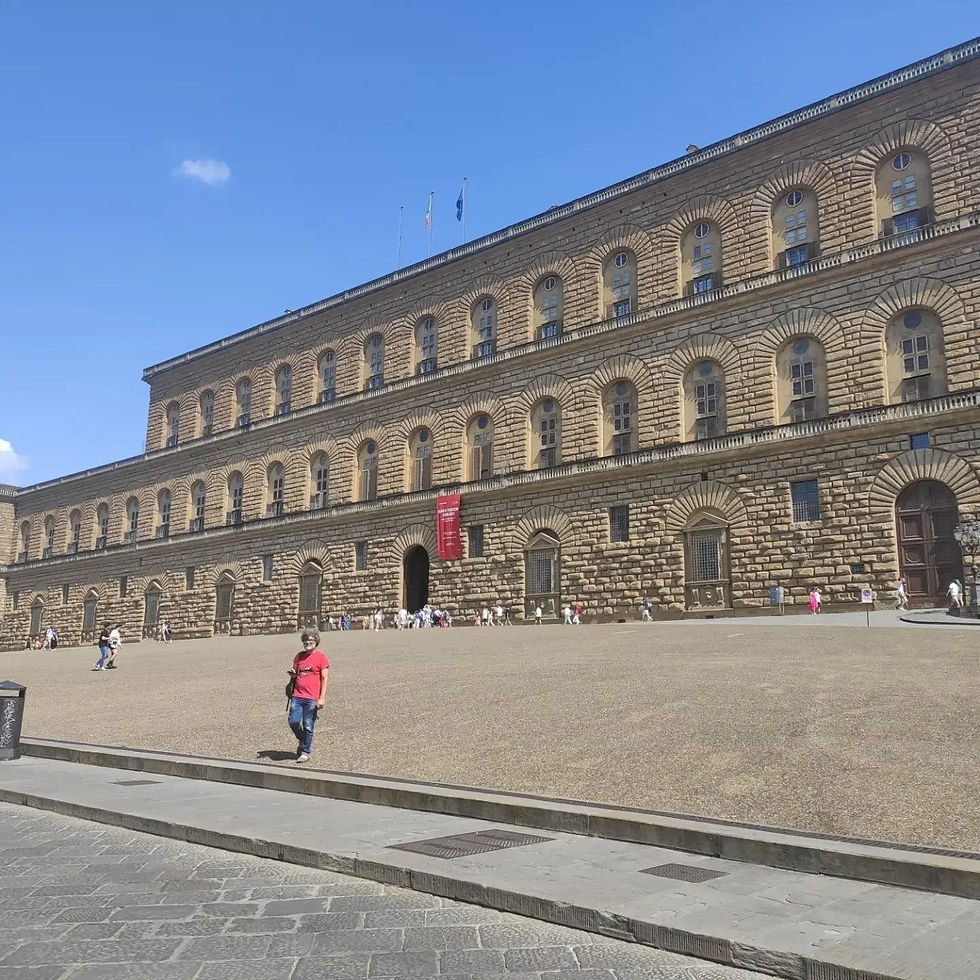Medici Chapel the secret gem in Florence
- infoflorencetours
- Sep 24, 2023
- 3 min read
Florence, The Chapel of the Princes it is the mausoleum of the Grand Dukes of Tuscany and their families, it is part of the museum complex of the Medici chapels of Florence, created from some areas of the basilica of San Lorenzo. The sumptuous octagonal environment is 28 meters wide and is surmounted by the dome of San Lorenzo, which reaches a height of 59 meters, the second most majestic in the city after that of Brunelleschi. The chapel was designed by Cosimo De Medici, but its construction is due to his successor Ferdinando l, who appointed the architect Matteo Nigetti as responsible, it was built between 1604-1640 based on a design by Don Giovanni de’ Medici. This mausoleum is a rare example of the Baroque style in Florence, whose large dome and sumptuous interior were conceived as monuments to the greatness of the Medici. The sumptuous octagonal room was designed to house the tombs of the grand dukes and is completely covered in semi-precious stones and marbles. The sarcophagi are completed by bronze statues of the Grand Dukes. The work to create the very rich inlays lasted over three centuries, due to obstacles both in the processing of the materials and their very high cost. The dome was originally supposed to have an internal covering of lapis lazuli, but with the death of the Medici it was not finished and was fresco and in 1828 by Pietro Benvenuti with scenes from the Old and New Testament according to the wishes of the Lorena family.
The sumptuous octagonal space is 28 meters wide and is topped by the dome of San Lorenzo, which reaches a height of 59 metres, the second most majestic in the city after Brunelleschi’s. The statues of the Grand Dukes were supposed to fit into the niches, even if only those for Ferdinand I and Cosimo II were made, both works by Pietro Tacca executed between 1626 and 1642. The other grand ducal tombs belong to Cosimo I (1519-1574), Francesco I (1541-1587) and Cosimo III (succeeded Ferdinand II, 1643-1723). In the center of the atrium, according to the intentions of the clients, there was to be the Holy Sepulcher, but the various attempts to buy it or steal it from Jerusalem failed. The sarcophagi are actually empty and the real remains of the grand dukes and their families (about fifty major and minor ones) up to Anna Maria Luisa de’ Medici (last heir of the dynasty, 1667-1743), are preserved in simple rooms created in the floor of the crypt below. From behind the altar there is access to a small room where other precious reliquaries are displayed, some of which were donated to the city by Leo X
Being one of the famous artistic workshops of the Italian Renaissance, the Opificio was established in 1588 at the behest of Ferdinando I de’ Medici to provide the elaborate, inlaid precious and semi-precious stonework. One of the masterpieces of the crafts is the overall decoration of the Cappella dei Principi (Chapel of Princes) in the Basilica di San Lorenzo di Firenze. The technique, which originated from Byzantine inlay work, was perfected by the Opificio masters and the artworks they produced became known as opera di commessi medicei (commesso is the old name of the technique, similar to ancient mosaics) and later as commesso in pietre dure (semi-precious stones mosaic).
The artisans performed the exceptionally skilled and delicate task of inlaying thin veneers of semi-precious stones especially selected for their color, opacity, brilliance, and grain to create elaborate decorative and pictorial effects. Items of extraordinary refinement were created in this way, from furnishings to all manner of artworks. Today, artisans trained at the Opificio assist many of the world’s museums in their restoration programs.
The Opificio workshops were originally located in the Casino Mediceo, then in the Uffizi and were finally moved to their present location in Via Alfani in 1796. After the end of the 19th century, the institute’s activities moved away from the production of works of art and towards its restoration. At first specializing in hard-stone carving, in which the workshops were a world authority, and then later expanding into other related fields (stone and marble sculptures, bronzes, and ceramics).
If You want discover this fantastic place come with us to discover this or many others secrets about this fantastic city Florence. We are running our Florence free walking tour every day from Santa Maria Novella square . You will have the opportunity to discover this place and many others in this amazing town.




Comments